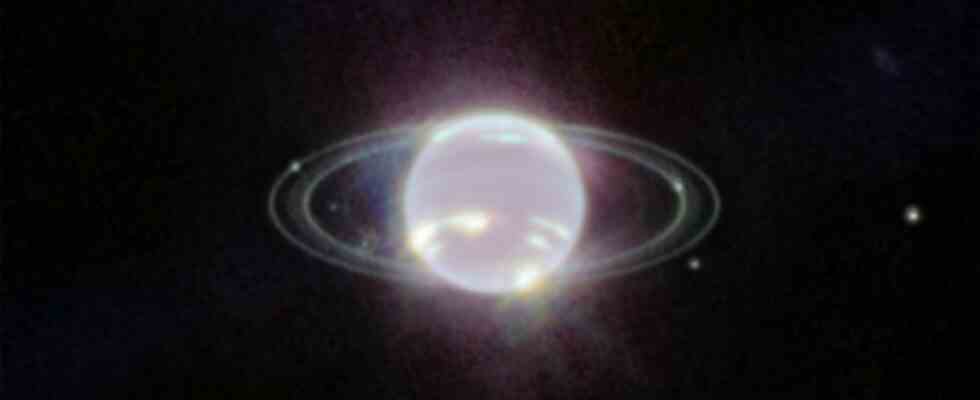The James Webb Space Telescope has captured a spectacular new image of the planet Neptune. On the of the European space agency Esa In the image provided, the rings of the ice giant can be seen with exceptional clarity.
The dust bands around the planet are also clearly visible. A thin bright line around the equator could be a sign of the atmospheric circulation driving Neptune’s winds and storms. The North Pole is no longer visible to the telescope. However, the recordings indicated an unusual brightness in the region.
Neptune’s rings have not been seen with this clarity for more than three decades.
(Photo: Uncredited/dpa)
Built jointly by space agencies in Europe (Esa), the United States (Nasa) and Canada (CSA), James Webb was launched on December 25 aboard an Ariane launch vehicle from Europe’s Kourou Cosmodrome in French Guiana – after it there had previously been cost explosions and repeated postponements. Behind the project are 30 years of development and costs of around ten billion dollars.
The Webb telescope follows the Hubble telescope, which has been in use for more than 30 years. The first images from the telescope were published in mid-July and provided the deepest and most detailed insights into space to date.
Three images of Neptune: taken by Voyager 2 in 1989 (left), Hubble 2021 (middle) and Webb 2022 (right). In visible light, Neptune appears blue due to small amounts of methane gas in its atmosphere. Webb’s near-infrared camera instead observed Neptune in the near-infrared, where Neptune resembles a pearl with thin, concentric oval rings.
(Photo: Uncredited/dpa)
The James Webb telescope provides new images from the early universe with the help of a 25 square meter mirror, among other things. Science hopes the recordings will provide insights into the time after the Big Bang around 13.8 billion years ago – and possibly even evidence of a second earth.

